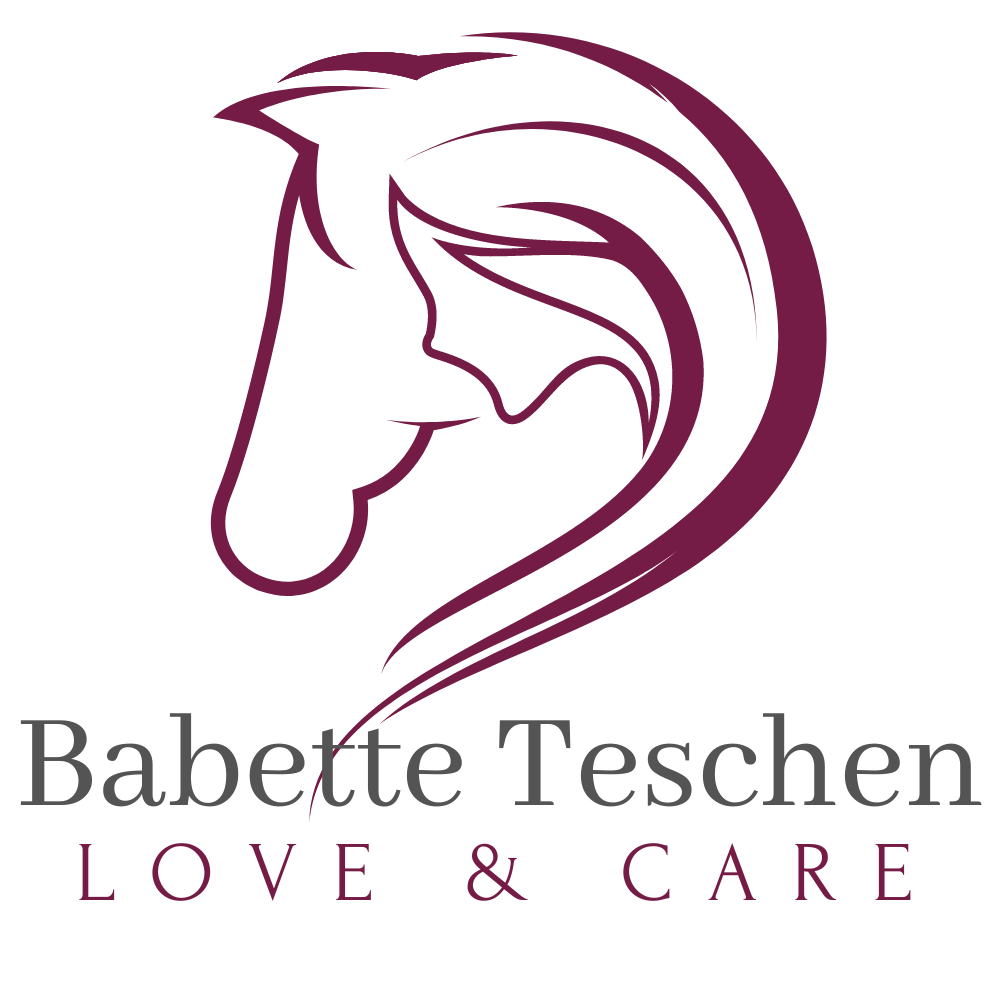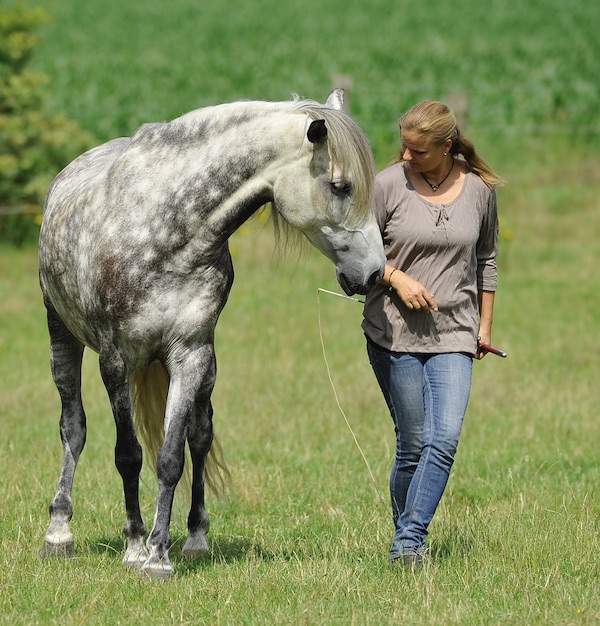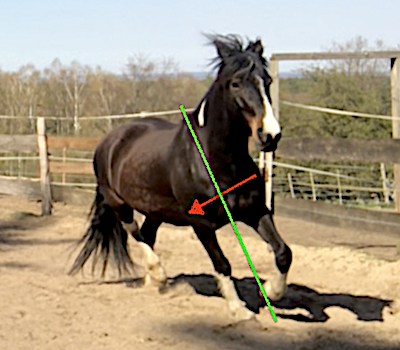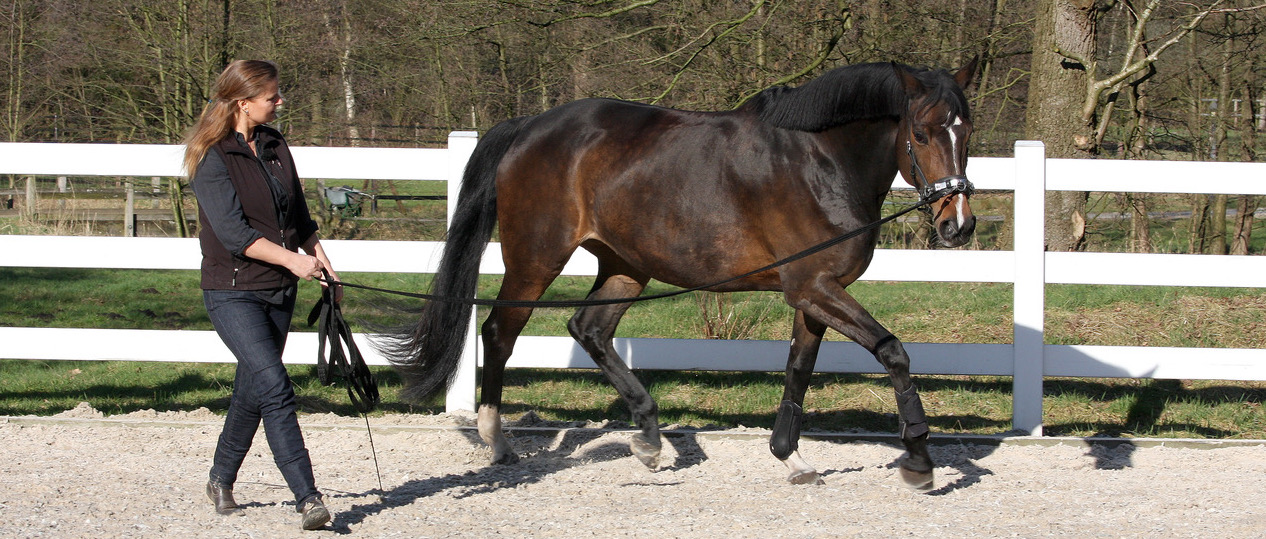Why liberty work is useful? | Motivated & Healthy Horses
by Babette Teschen
I love liberty work with horses.
I feel deeply touched and get goosebumps when a horse follows me in an open field, full of opportunities to run away.
It is pure happiness watching my horse consciously choosing me, over grazing or hanging out with its horse buddies.
A horses voluntary decision to connect and be with me is nothing that should ever be forced.
Participants in my practical classes regularly confirm that a horses honest and liberal decision affects them as well.
But how do we get there?
At fairs, on TV and on the internet, everywhere we look we see spectacular liberty work where horses with an on point recall, from any situation, always stay with their humans.
Although we are easily impressed by the “deep connection” and “great trust”, the illusion quickly shatters once we realize how often that type of behavior is simply trained.
If you want to leave, I will apply pressure!
In many cases the so called “devotion” is created by immense pressure. As soon as a horse turns away, people apply pressure on the horse, stressing it with a whip, crop or lead rope, until it follows them again.
A horse learns: I won’t be bothered… if only I stick with the human.
A horse tries to avoid negative consequences and therefore chooses the human as the lesser of two evils.
Unfortunately, this is a technique that works. The internet is full of young horse people, already chasing their horses in order to create “trust”. It makes me very sad!
I don’t want my horse to stay next to me only because it fears negatives consequences if it runs away.
It is the first motivation that will make a horse stay with us in avoidance of experiencing pressure. If that’s the case, it is an illusion to believe the horse is voluntarily staying with us. That horse has simply no other choice.
Therefore, I allow all my horses to leave if they so choose. I don’t pressure them, and they don’t have to fear negative consequences. If they do decide to leave, I will try my best to find ways to motivate them to enjoy being with me and returning.
Positive emotions due to praise!
For many years, I have been choosing positive reinforcement as a training tool. Nowadays, I use positive reinforcement in a more structured way, by marking positive behavior. In turn, I trigger the second motivation: A horse shows a certain behavior, expecting something positive to happen.
That way, we both experience positive emotions!
I use positive reinforcement for anything we do together, whether it’s during ground work, riding or liberty work.
It is my way to reach my desired destination: a motivated and happy horse in liberty!
One important piece is still missing!
Through positive reinforcement, I now have a horse that enjoys liberty work with me. That’s wonderful!
But in most cases, horses have not yet learned to move in a healthy manner.
Example Hope
This is the pinto mare Hope. She does not show healthy movements in the roudpen: No suppleness, very lopsided, lots of weight on the forehand and a tense topline.
She has not learned yet how to move in a circular path, and simply shows a horses natural movement pattern in a curve.
In the long run, that way of moving causes harm to joints, ligaments and tendons.
For healthier movements during liberty work, our horses need to learn how to move with:
- Suppleness
- Balance
- Flexion
- Active hindquarters
This is the basis for what’s taught in “A Course of Lunging”.
Then, I have both components needed to create liberty work with horses:
The result:
A motivated, happy horse that moves in a healthy manner during liberty work.
You prefer watching over reading?
We got you covered!









